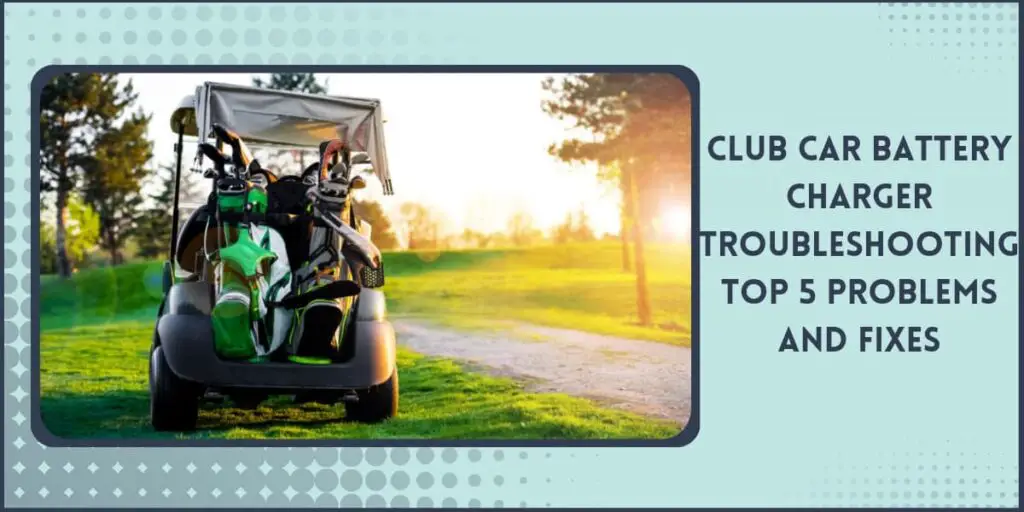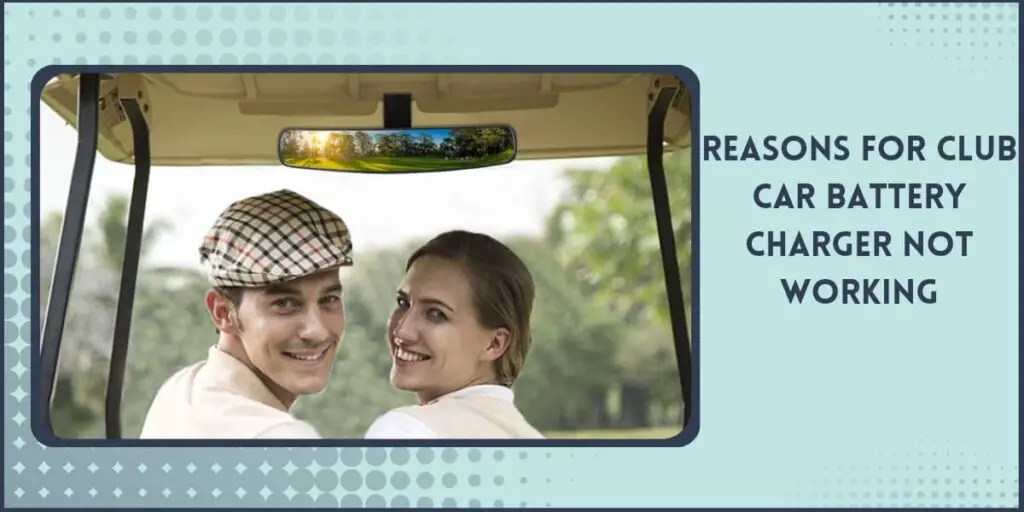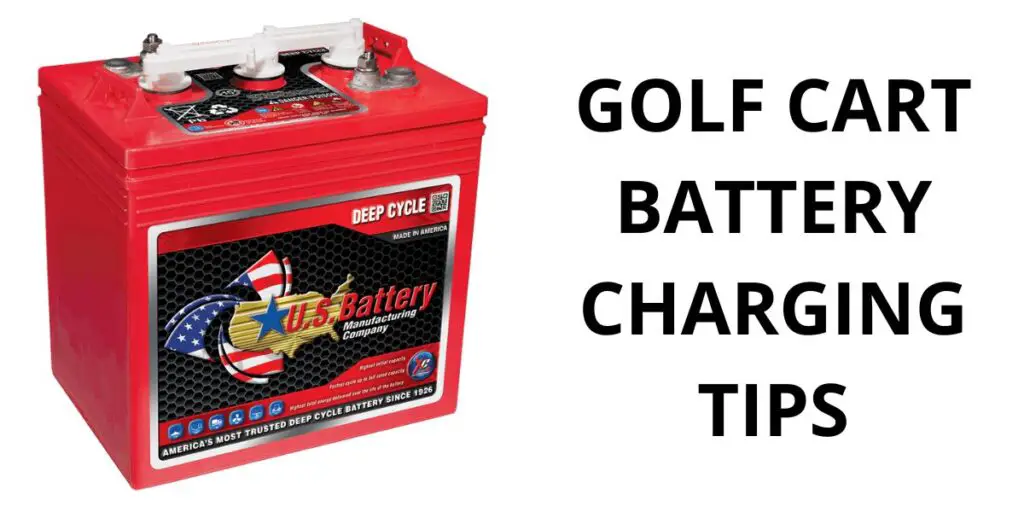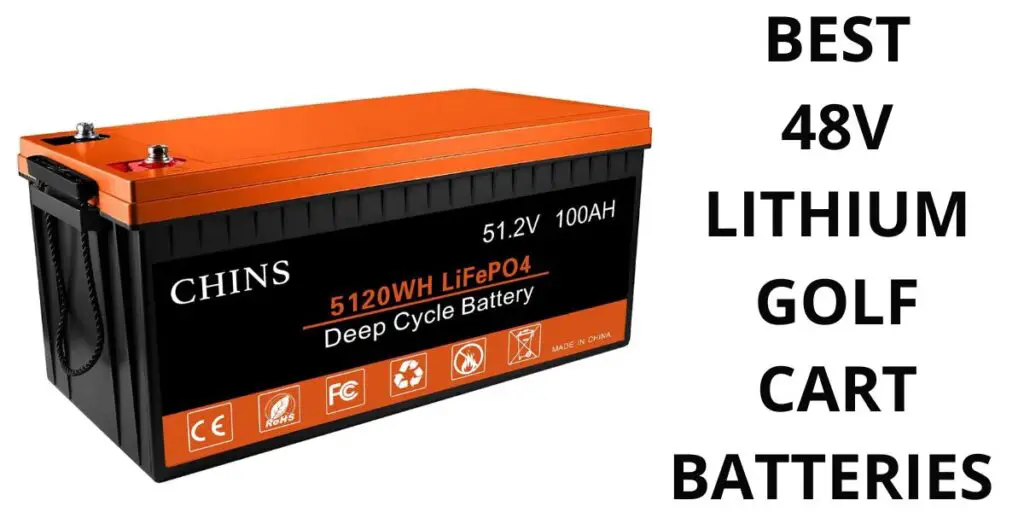I’m sure you’ve all had that moment when you’re ready to hit the greens and your Club Car’s battery just won’t cooperate. Trust me, I’ve been there.
But before you start tearing your hair out, let’s take a step back and see if we can troubleshoot the issue with your Club Car battery charger.
In this article, I’ll be sharing my Club Car Battery Charger Troubleshooting Guide and the tried-and-true methods that have worked for me in the past.
Club Car Battery Charger Troubleshooting: Top 5 Problems & Fixes

1. The Charger Won’t Turn On
If your charger doesn’t turn on when you plug it in, this could be due to a weak connection, corrosion, or dirt buildup on the charger (or battery) terminals. It could also be that the battery’s charge is too low for the charger to detect.
How to Fix This Problem
- Clean any corroded terminals you find. You can clean the battery terminals with warm water and baking soda.
- Use a manual charger to boost your battery’s charge enough to activate your regular charger.
- Check the charger’s cable for wear and tear and replace it if you find any.
If you have 48v batteries, you should get the Best 48 Volt Golf Cart Battery Charger.
2. The Charger Makes a Clicking Sound
If your charger clicks when you plug it in and then does nothing, it knows your battery needs to be recharged but won’t charge it for some reason.
How to Fix This Problem
- Ensure the battery terminals are clean and tight.
- Check the circuit breaker and reset it if necessary.
- If the problem persists, have a professional check out the charger or consult the manufacturer’s manual for troubleshooting instructions specific to your charger model.
3. The Charger Overcharges or Undercharges Your Battery
Several factors can cause your Club Car battery charger to overcharge or undercharge your battery. These include a damaged cable, incorrect voltage settings, a voltage drop in the electrical system, or a technical issue with the device’s computer.
How to Fix This Problem
- Replace the cable if it’s damaged or worn out.
- Ensure the voltage setting is appropriate for your Club Car battery model.
- In the case of overcharging, consider using a timer or a smart charger that automatically stops charging once the battery is fully charged.
This article on Golf Cart Battery Charging Tips will help you manage your golf cart battery optimally.
4. The Charger Overheats
If your Club Car battery charger overheats during use, dust and debris might be blocking its airflow, causing it to heat up. Other possible reasons are that it has damaged or frayed wires or you are charging your battery for too long or with too high of a voltage.
How to Fix This Problem
- Set a timer, monitor the charging process, and stop charging once your battery is fully charged.
- Clean the charger regularly to allow proper ventilation.
- Check for any damaged wiring and repair or replace it.
5. The Charger Makes a Noise When in Use
If your charger always makes a noise when charging your battery, its cooling system might be faulty, leading to overheating and several other issues.
How to Fix This Problem
- Have a professional check out and fix the charger.
Reasons for Club Car Battery Charger Not Working

There are many reasons your Club Car battery charger may not be working, but here are the top five:
1. Your Golf Cart Hasn’t Been Used in a Long Time
When your golf cart sits for too long, especially in extreme weather conditions, its battery can lose its charge. And due to the battery’s low voltage, your charger will be unable to pick up its charge, let alone charge it.
How to Fix This Problem
- Use a general battery charger to manually boost your battery’s charge level so your regular charger can detect it and charge the battery.
- Always keep your batteries charged in periods you don’t use your golf cart, like during winter.
2. Your Battery Has Insufficient Water
Water is the medium for electrolysis in golf cart batteries, which helps them charge and power golf carts. However, several factors can cause your battery’s water level to drop, including overcharging the battery (which causes its water to evaporate) and not regularly adding water.
How to Fix This Problem
- Check your battery’s water level regularly, and add the necessary amount of distilled water to maintain the proper water level.
- If that doesn’t work, consider replacing the battery plates.
- But if replacing the plates doesn’t work, you may need a new Club Car battery.
3. Battery Connection Problems
Sometimes, charging issues may have more to do with the battery’s connections than the charger itself. For example, if your battery has any loose or faulty connections or residue on its terminals, this can obstruct the current flow.
How to Fix This Problem
- Open your battery compartment and check all the connections, especially the one between its terminals, to ensure they’re tight.
- If you find any residue on the terminals, gently clean them with warm water and baking soda.
4. Your Club Car Charger Is Faulty
Now, if you’re experiencing battery problems, and your battery isn’t to blame, the fault may be the charger’s wiring. Any battery charger will act up due to frayed or loose wiring.
How to Fix This Problem
- Check the charger’s wiring for any loose or damaged parts and tighten or replace them.
5. Faulty Golf Cart Components
If your battery and charger are all right, but your battery still won’t charge, the fault may be due to the golf cart components. For instance, the cart’s motor, ignition, solenoid, or onboard circuit may be faulty, preventing the cart from running on the battery.
How to Fix This Problem
- Check and adjust any faulty solenoids, onboard circuits, or direction switches.
Full Club Car Battery Charger Troubleshooting Steps
To make things even easier for you, I’ve compiled a step-by-step process to help you troubleshoot your Club Car battery:
- First, ensure that your power outlet is working properly and that its fuse hasn’t blown.
- Next, confirm that the power cable is in good condition and properly plugged into the power outlet.
- Ensure the charger’s connector is plugged into the golf cart and the connector pins are not corroded.
- Check that the charger’s status lights are functioning properly and indicating the battery is charging.
- Use a voltmeter to check the battery’s charge status, then compare it to the manufacturer’s recommended levels.
- Ensure that the battery’s wires, terminals, and other components in the electrical system are in good condition and connected properly.
- Compare the charging time to the manufacturer’s recommendations to ensure the battery isn’t overcharging or undercharging.
- Check the battery’s temperature to ensure it’s not overheating.
- If the battery isn’t charging, consult the manufacturer’s manual or contact their technical support.
How Do You Test a Club Car Battery Charger?
Testing your battery charger involves various steps that will test the charger and your battery and golf cart. To test your Club Car battery charger, you can take the following steps:
- Connect a voltmeter to your battery to measure the charger’s voltage output.
- Connect the charger to a good power source, then turn it on and read the electrical output. Ideally, you want your battery to have around 36 amps.
- Observe the charging process to ensure the charger is functioning properly. The battery voltage should increase as it charges.
If the charger isn’t working properly, it may need to be serviced or replaced.
How to Trick a Club Car Golf Cart Charger to Work
There are many ways to trick a Cub Car battery charger into charging a dead battery. But you must only use a safe and effective method, or you might damage the charger or your cart. Here are some steps to guide you while using a battery jump starter:
- Disconnect the charger from the power source.
- Remove the dead battery and other parts that may be attached to the charger.
- Get a pair of jumper cables, then connect the cable’s red clip to the battery’s negative terminal.
- Next, connect the jumper cable’s black clip to the battery’s positive terminal.
- Finally, plug the golf cart battery charger into the dead battery.
You’ll notice the battery will start charging at full speed. This is because you will have tricked the charger into thinking the battery is fully charged. So ensure you carefully monitor the charging process to prevent the battery from overcharging or overheating.
How Do I Maintain My Club Car Battery Charger?
You can take the following steps to maintain your battery charger:
- Always keep the charger in a cool, clean, and dry place.
- Check the charger’s wiring regularly for damage.
- Finally, check the charger’s voltage and amperage output to ensure it’s within the recommended range.
How Do I Know If My Golf Cart Battery Charger Is Bad?
Several signs can indicate a faulty Club Car battery charger. For instance, if the charger doesn’t turn on when plugged in, makes clicking noises, overheats often, or overcharges your battery, it’s best to stop using it and inspect it.
How Often Should I Charge My Club Car Battery?
You should always charge your Club Car battery as soon as possible after each use, or at least once a week if you don’t use it frequently. You should also fully charge your battery before leaving it for a long time, and always charge your battery before it completely discharges to prolong its lifespan.
FAQs about Club Car Battery Charger Troubleshooting
Here are some frequently asked questions about Club Car Battery Charger Troubleshooting:
How Do I Know When My Club Car Battery Is Fully Charged?
Typically, the charger’s LED indicators will show you when your battery is fully charged. But a more accurate method is to check your battery’s voltage with a voltmeter.
What Type of Charger Should I Use for My Club Car Battery?
You should only use a charger specifically designed for lead-acid batteries; it must also have the correct voltage for your golf cart. So, if you have a 36-volt cart, you must get a 36-volt battery charger.
Conclusion
Battery charger issues are common among electric golf cart owners, and knowing how to troubleshoot your charger, battery, and cart can make a huge difference. Hopefully, with the information in this blog post on club car battery charger troubleshooting, you can approach any charging issue you experience more confidently and practically.


